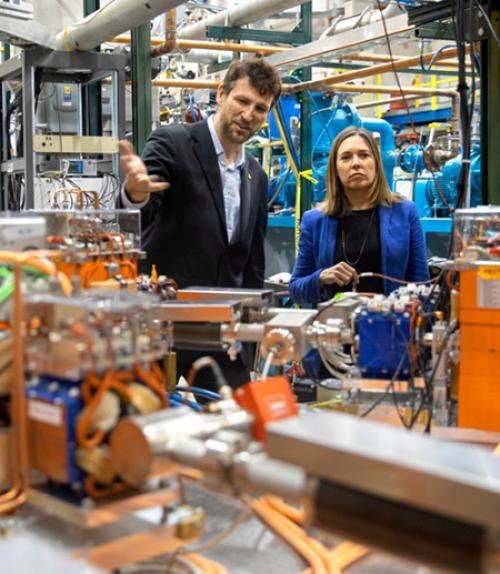
 Department Homepage
The College of Arts & Sciences
Department Homepage
The College of Arts & Sciences
Celebration marks prototype accelerator getting up to speed
Construction is complete and the first major test was a success, so a celebration was in order to mark these accomplishments of the Cornell-Brookhaven ERL Test Accelerator facility, known as CBETA. In time, it is expected to become the most energy-efficient, high-performance accelerator ever built.




